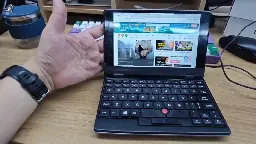Miniature RISC-V Developer Laptop Looks Like a Lenovo ThinkPad Clone | Tom's Hardware
Miniature RISC-V Developer Laptop Looks Like a Lenovo ThinkPad Clone | Tom's Hardware

www.tomshardware.com
Miniature RISC-V Developer Laptop Looks Like a Lenovo ThinkPad Clone

